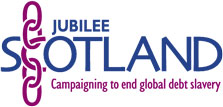 |
Commentary:
Niger and the debt relief process 9.08.05 |
|
| News |
| Past Events |
| Campaigning |
| Comment & Analysis |
| Debt Links |
A more chilling indictment of the HIPC programme could not be imagined. Niger was deemed eligible to enter the programme in 2000: debt relief was to be provided on the condition that it implemented the structural economic reforms claimed by the IMF to be essential to put it on a sound economic footing. It completed these reforms, and received its final tranche of debt relief, in April 2004. The warnings of potential famine were sounded just seven months later.
We are told that the current disaster was caused by a plague of locusts, but a country truly on a sound economic footing would be able to cope with this. Neighbouring Mali was also affected by the locusts; Malians are not facing starvation. The reality is that the reforms required by the HIPC programme leave economies fragile and dependent on single exports. The debt relief proposals tabled by the G8 earlier this month will only serve to make this problem worse. The G8 proposal is to provide total debt cancellation for countries that, like Niger, have already met the HIPC demands and to fund this primarily by a reduction in aid disbursements.
Should this deal go through – and it could still fail - it would put an end only to the hideous spectacle of Niger paying out in debt service money needed immediately to feed its own people. The fundamental problem is that African countries are being required to manage their development according to economic theories that have been shown to fail. This problem remains untouched.
| © 2004 Jubilee Scotland | |